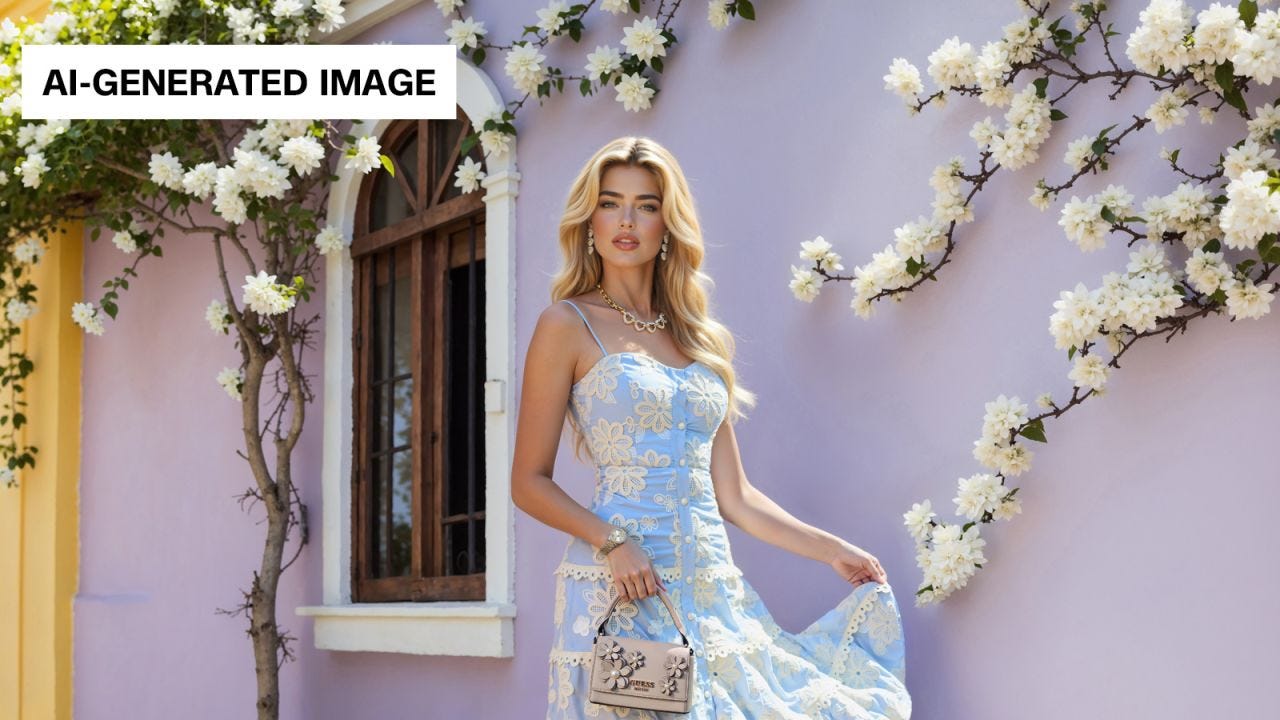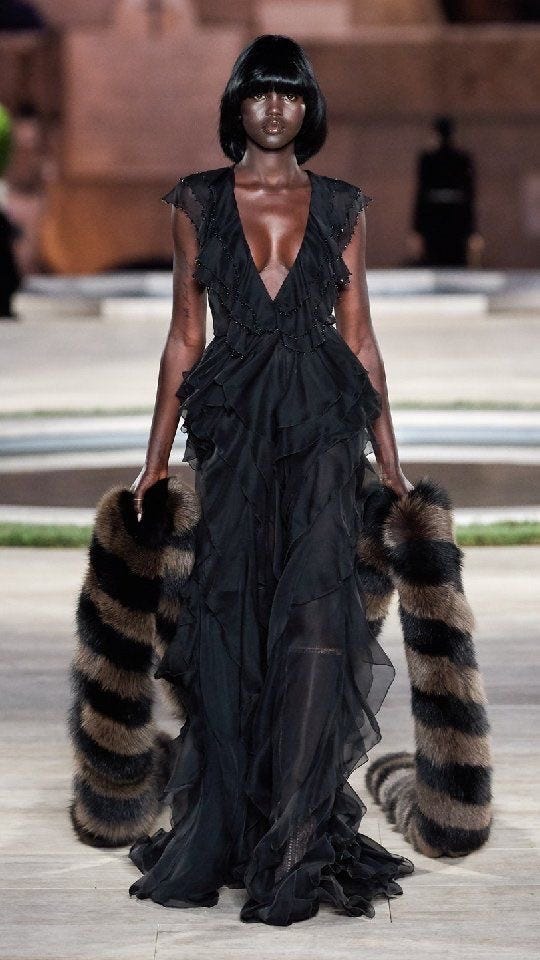The debate of AI in the workplace grows louder and more relevant every day. Whilst many believe AI could be used as a helpful tool for efficiency in both day-to-day life and certain workplaces, it should be made clear that there is a difference between using AI to streamline your daily schedule and asking ChatGPT how to turn on an oven. There is no need to replace our brains with computers – that spells the beginning of the end.
An issue that is becoming bigger and increasingly worrying as AI evolves centres around art; more specifically, AI being used to create art. Which should be impossible, considering art is born from human experience and emotion, something that artificial intelligence is physically incapable of feeling. Don’t let Disney’s WALL-E lie to you.
An area of the arts that you would think is safe from AI influence is fashion – how can a digital interface come up with ‘new’ designs, organise runways, photoshoots, hire models? The work and world of fashion is often a team effort involving lots of creatives from all walks of life; but maybe not for much longer. In the latest issue of Vogue, there is an unassuming Guess advert featuring a picture perfect model – but she is far from human. Between the gorgeous Anne Hathaway on the front cover and the authentic articles shaped by fashion and culture royalty within, Vogue has joined the growing cult of businesses and ‘artists’ who are turning to computer generated slop for all of their creative endeavours. And it hasn’t been well received.
Long-term subscribers have cancelled their monthly payments with the press of a button. Readers taking to all corners of the internet to name and shame Guess as well as Vogue for featuring such an uninspiring advert. Millions ditching Vogue for Harper’s Bazaar. If Vogue thought they were being ‘innovative’ and ‘forward thinking’ with this experiment, then they have been told, quite loudly, that they were sorely mistaken.
Of course, this isn’t the first time a digital model has appeared in the fashion powerhouse magazine, and it likely won’t be the last. In an issue from 2024, Vogue Czechoslovakia Leaders introduced the world to the first ‘digital supermodel’ – Shudu Gram, created by British photographer Cameron-James Wilson, whose front page image of the model was entirely computer generated. With the publication of the issue came, again, immediate backlash concerning cultural appropriation and identity theft – the white photographer created Shudu with the image of a Princess of South Africa Barbie doll in mind, as well as real life Somalian fashion model Iman.
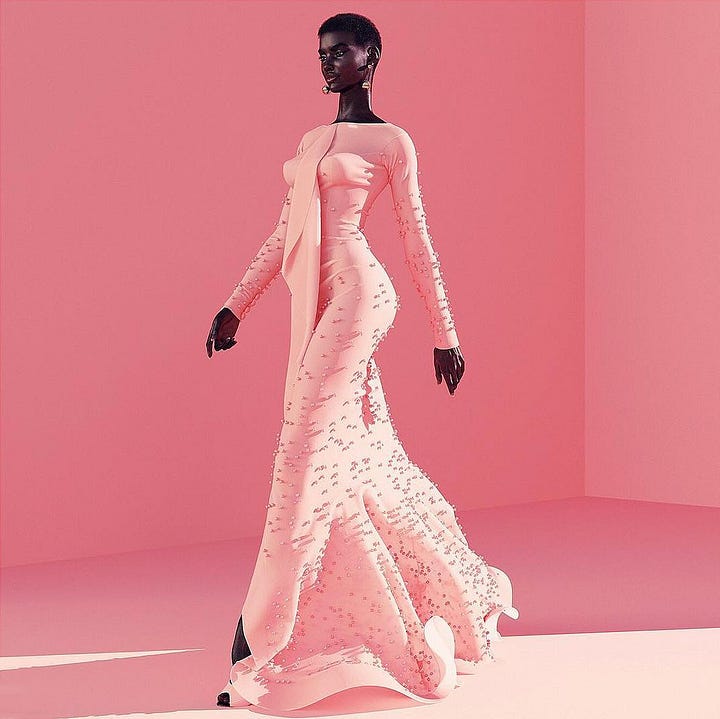
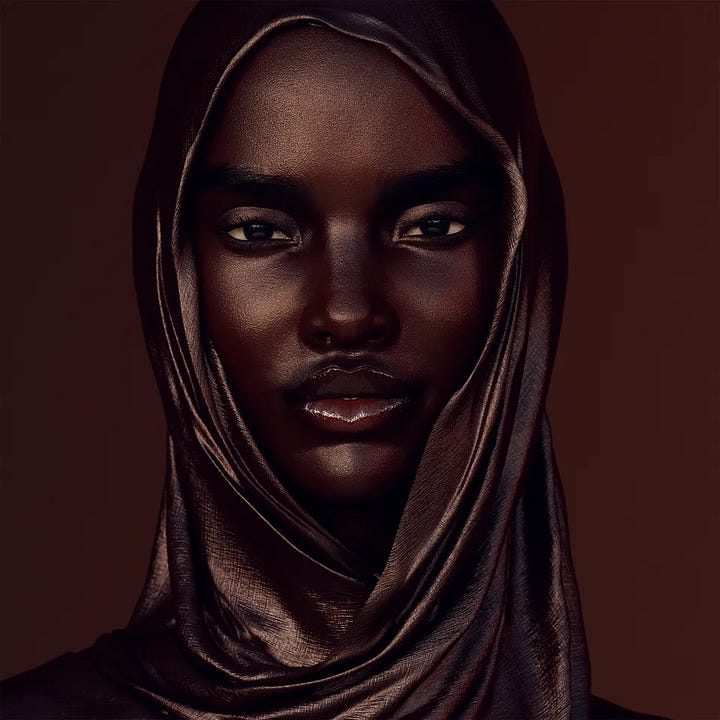
Many people interpret Shudu as an appropriation of real-life black models and see Wilson as someone hopping on to the fetishized ‘movement’ of black women in fashion, without actually taking the time to interact with any black artists during the process. Not to mention how much harder models of colour have it compared to their white peers in terms of finding consistent work. To choose a digitally created black model over a real life person creates further obstacles for black models in the industry and is appropriation on an entirely new level, further proving why AI has no place in the fashion industry. It has ‘theft’ written all over it and feels like ten steps backwards with technology that should be moving us forward.
Vogue is one of the primary and most influential sources designers and brands look to for trend data and inspiration - by featuring AI models in their pages, Vogue is acknowledging that they think AI belongs in fashion, that AI is ‘trendy’, and are therefore encouraging designers to follow suit. It's already happening – Guess, Balenciaga, Mango and H&M have all stated that they back the use of digital models and will be implementing them into some of their lesser photographic campaigns and social media marketing strategies. The more companies that go down this route, the more real-life models, photographers, hair and makeup artists, wardrobe assistants and set designers will lose their jobs.
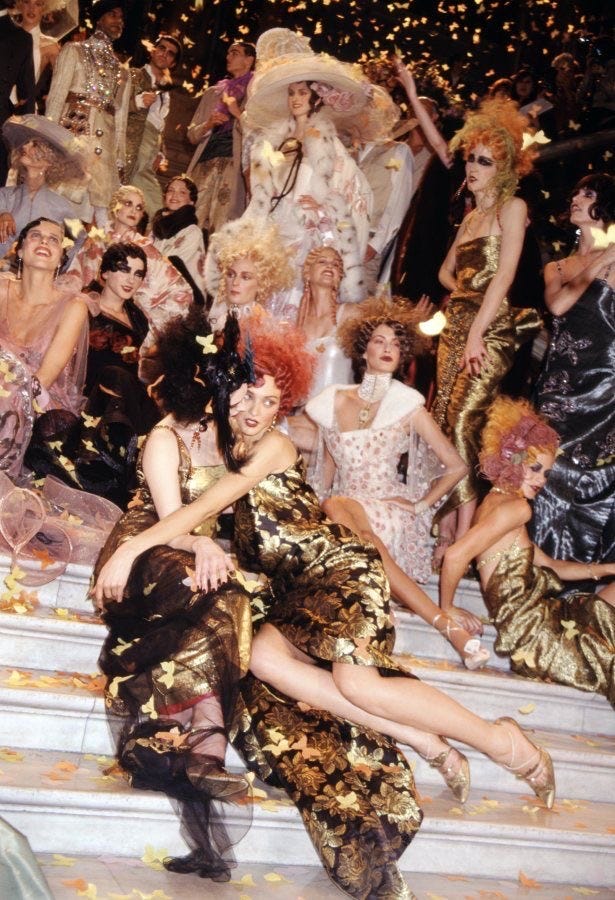
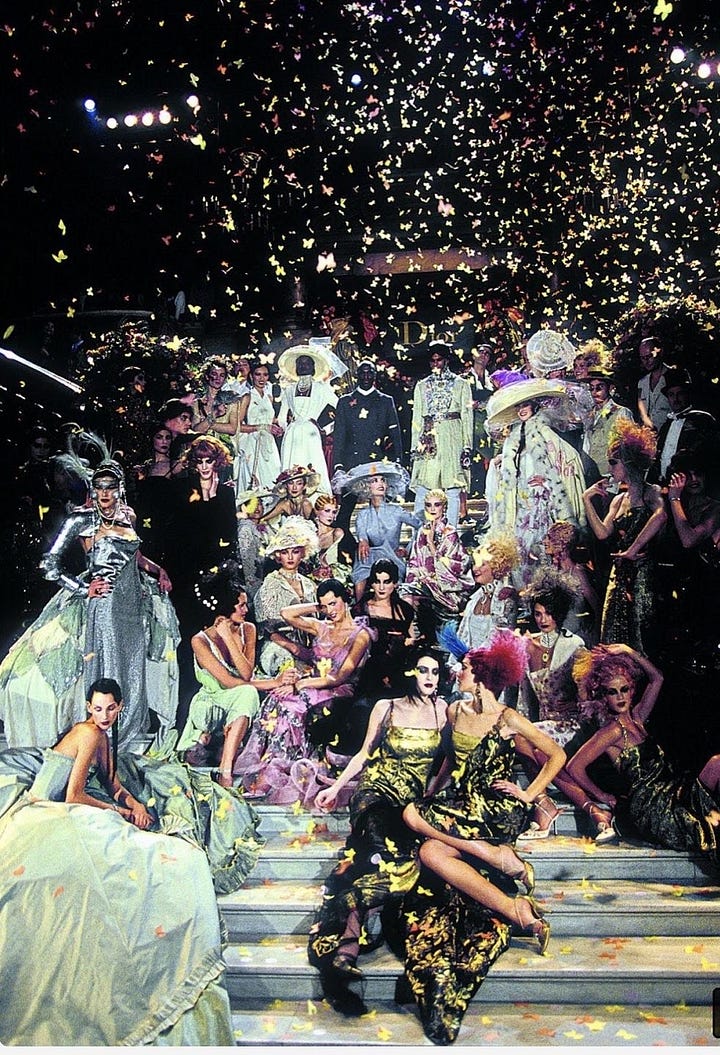
It is a genuine and real threat to the livelihoods and artistic culture of not just the fashion industry, but all artistic careers that are also being affected by AI. The convenience of work being streamlined through a computer system instead of hiring crews of people is single-handedly killing off jobs left right and centre, as well as artistic authenticity and connection through art. Styles, concepts, artwork will begin to be repeated, and trends will become stuck in a loop of repetition and unoriginality. Why? Because AI is not capable of creating brand new concepts. It can only sift through the internet, lock onto images and words and faces and trends, and mash them together to create a replica of something that already exists, re-branded as ‘revolutionary’. This is not art. There is no feeling, no experience or determination, in that process.
I don’t know about you, reader, but as someone who loves fashion, the feeling of owning a unique item of clothing that you can tell has been hand-made, from idea conception to creation, is something that feels truly special to me. Owning something that’s design was remixed by a robot and that a million other people own doesn’t invoke that same feeling.
The more images I see of these digital models, the more it becomes obvious how fake they are. Fundamentally, AI is incapable of making an image ‘imperfect’ – its coding ensures that it strives for the most flawless image it can manage. And ‘perfection’ is simply not a part of the human body.
I think of all the real-life models who are categorically gorgeous, but all have slight ‘imperfections’ that make them all the more unique. Lauren Hutton with her iconic gap tooth. Cara Delevingne and her unconventional eyebrows. Winnie Harlow’s vitiligo. Why strive for a ‘perfect’ digital model when all these beautiful, original people already exist?
I think further of all my friends and family, some of whom will see a picture of a digital model, who will not be able to tell that what they’re looking at isn’t real, and will immediately compare themselves to it. I think of my mother, who still compares her body that has lived a beautiful life and carried two children, to the models she sees in magazines. My sister, who deems her lack of ‘curves’ must make her manly and unattractive, but little does she know how elegant she is. One of my best friends whose face is adorned with freckles, a mole on her neck that she vows to have removed, but I can’t picture her without it. Even myself, my distaste for my own smile - but it is mine and I wouldn’t be me without it.
All these ‘flaws’, whilst deemed ‘imperfect’, I feel are something more important altogether: they are human. And humanity is what gives art meaning.



